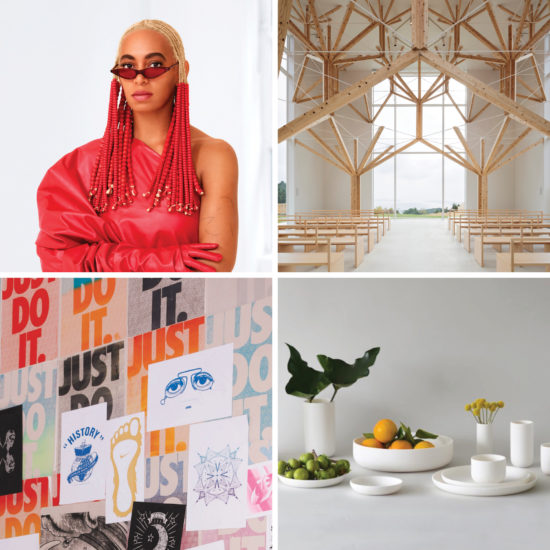To reflect on the experience of rain is to uncover more than droplets descending from clouds. It is the cooling gusts of displaced air, the humidity born from vapor, the auditory patter upon contact, the scent of petrichor, and more. With Transposition, a site-specific sculpture by Dr. Samuel Ross MBE housed in an old bell foundry, all of these sensory facets have been replicated—the mist, the rush and churn of rain falling upon water, the rolling percussion. The architectural work is composed of three skeletonized copper towers, escalating in size and scale, each of which produces rain.
In a Historic Foundry, Samuel Ross Conjured a Squall for Milan Design Week
A site-specific, multisensory sculpture composed of copper and water, Transposition marks The Balvenie’s first-ever commission for Fuorisalone
BY DAVID GRAVER April 14, 2025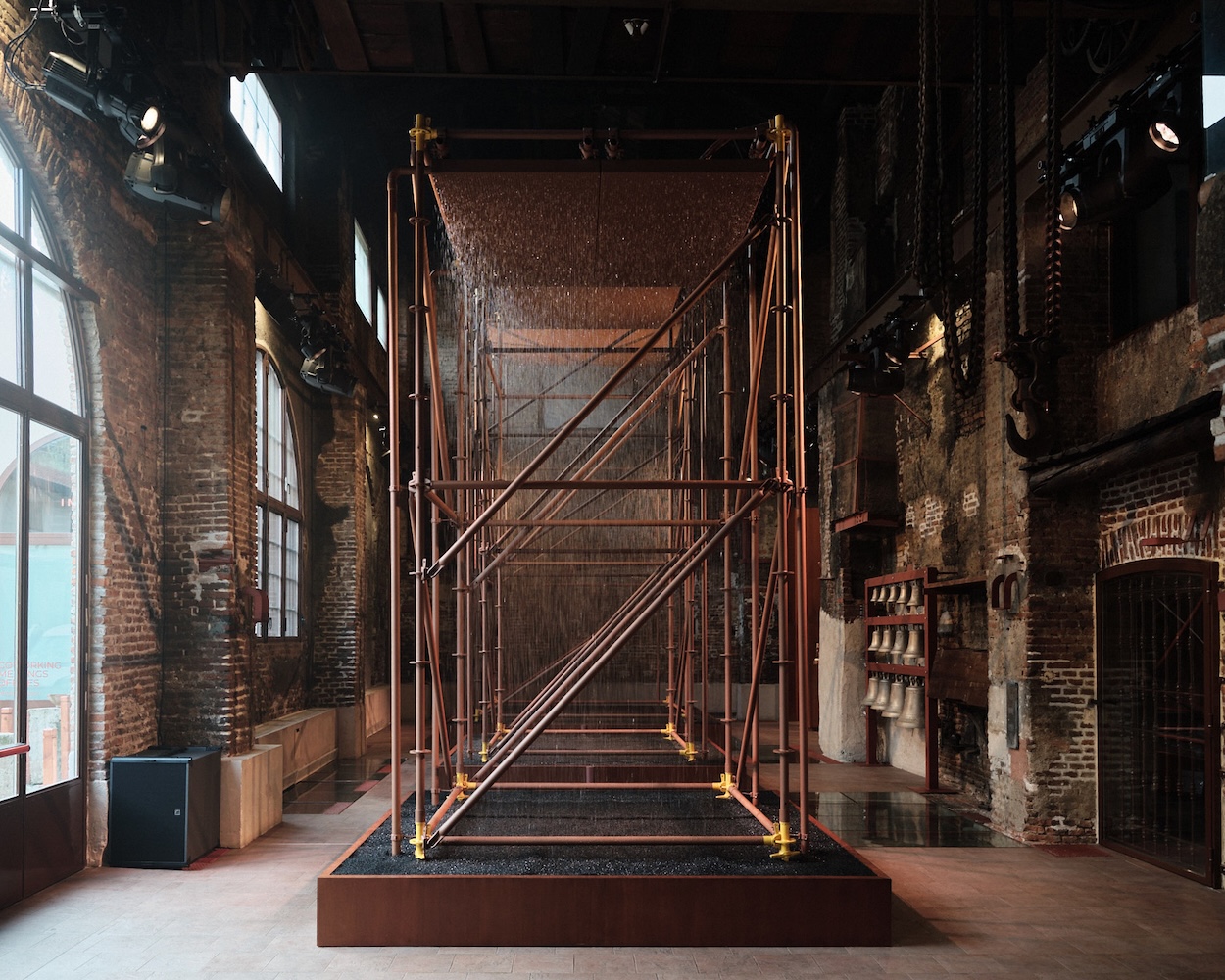

The piece, commissioned by The Balvenie for Milan Design Week’s Fuorisalone program, acts as a metaphor for whisky production—but it also aims to evoke a feeling. “There’s an interesting line with projects that sit between fine art and design,” London-based Ross tells Surface in Milan. “With design, you need to make sure there is the meaning and context that sometimes art is absolved of—but you also need to make sure that it fundamentally moves people. That is the superpower of the arts.”

Ross—the founder of the label A-COLD-WALL*, the industrial design studio SR_A, and the Black British Artist Grants Program—tinkered with staging, scale, scenography, and even the speed with which the water moves in Transposition—to play with the senses. This isn’t the first time he looked to water as a material. “It started in fashion initially,” he says, noting that he had Rottweilers on runways flanked by pools for his FW19 presentation at London Fashion Week Men’s. “There is something so optimistic and democratic about the access and relatability to water, which we all engage with daily,” he says. “This makes it such a great connective piece of tissue for us all.”

Through Transposition, Ross brilliantly marries a feeling of a meditative stillness with continued momentum. “I think this idea of perpetual change and repetition and harmony and rhythm is captured by those 51,000 liters of water being pumped between each of these tanks,” he explains. Counter to that is the designer’s first use of copper, which varies from polished to raw throughout the foundry. His motivation was a 1 a.m. visit to The Balvenie distillery, where he saw the artisans “machining and conjuring and working with these large stills. I wanted to capture the tension between the industrial process and the delicacy of procuring whisky.”

Inside the foundry, a 15 percent scale increase of each of the three towers pulls viewers in deeper. “You have more water churning at a higher intensity the further you go into the space,” Ross explains. “The octaves increase. The percussion increases. From a sensorial and emotive stance, it’s so endearing to pull people in through motion. Once we got the infrastructure in place, it became about driving the feeling in the space that the people are coming for.” All towers are churning water at the maximum octane of the internal pumps in order to disperse as much water as possible.
Ross manipulates light, oscillating between cool and warm tones, an effect that enhances a nighttime experience with the work. He also pairs the natural soundscape with a playlist of Brian Eno tracks. “The main character in the installation is the throwing water, which delivers the percussion,” he says. “There were a couple of independent scores that I developed but there was too much clashing. Fundamentally I knew that we needed a liminal space to enable the percussion of the water to remain the focal point of the experience.”
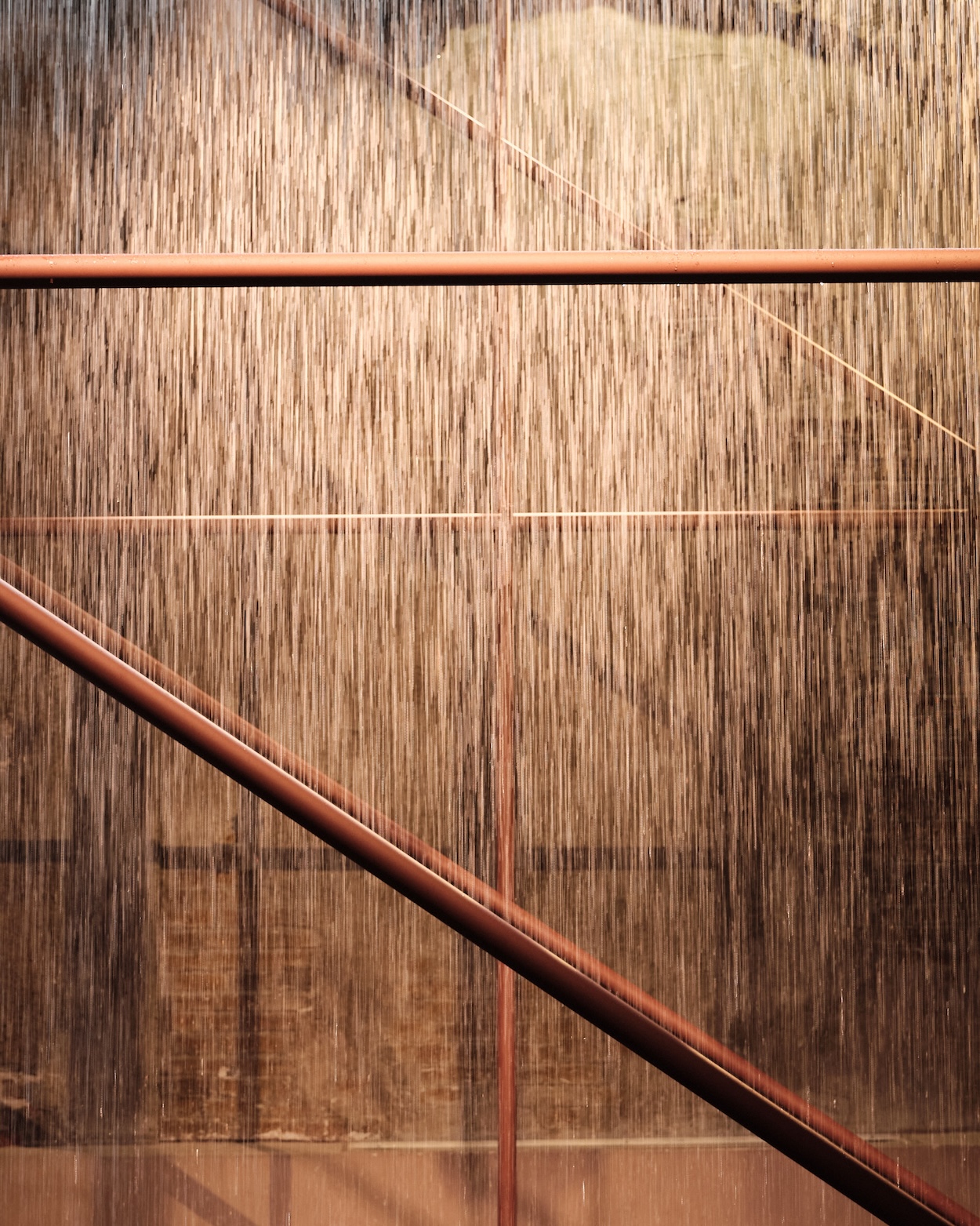
He sees the sensorial orchestra as a performance, which translated inspirations from The Balvenie and enveloped on-site events. This included a tasting of the first two editions of The Balvenie 50 Collection, one of which debuted this year and marries whisky from an American Oak Hogshead cask with scotch aged in a European Oak Refill Butt, both from 1973. “When I take a sip of The Balvenie 50, there aren’t words for that moment,” Ross says. “It’s amazing when art can move beyond words. With Transposition, it’s about finding ways to reflect and personify the complexity and robustness of the flavors.”
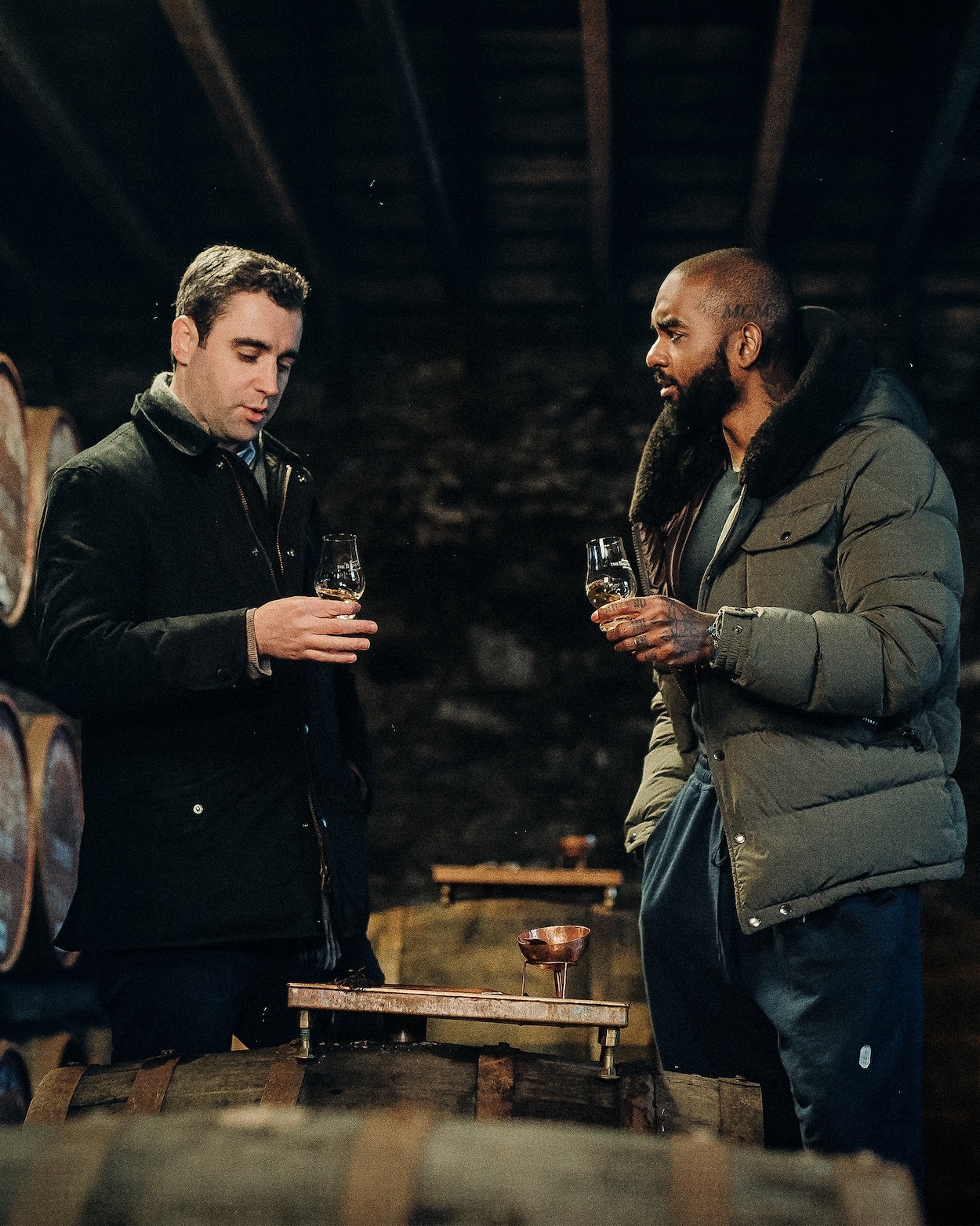
Beyond Transposition, Ross has achieved a milestone with the Black British Artist Grants program. “We’ve now reached our cohort of 50 people,” he says. “Each year we provide grants of 25,000 pounds, which are taken from our company profits, and we donate those to 10 individuals. The whole prospect of the program was never really about giving people a break. It was more so asserting exceptional talents.” Here, he feels like a bridge between established institutions and the cultural pulse, or academia and subculture.
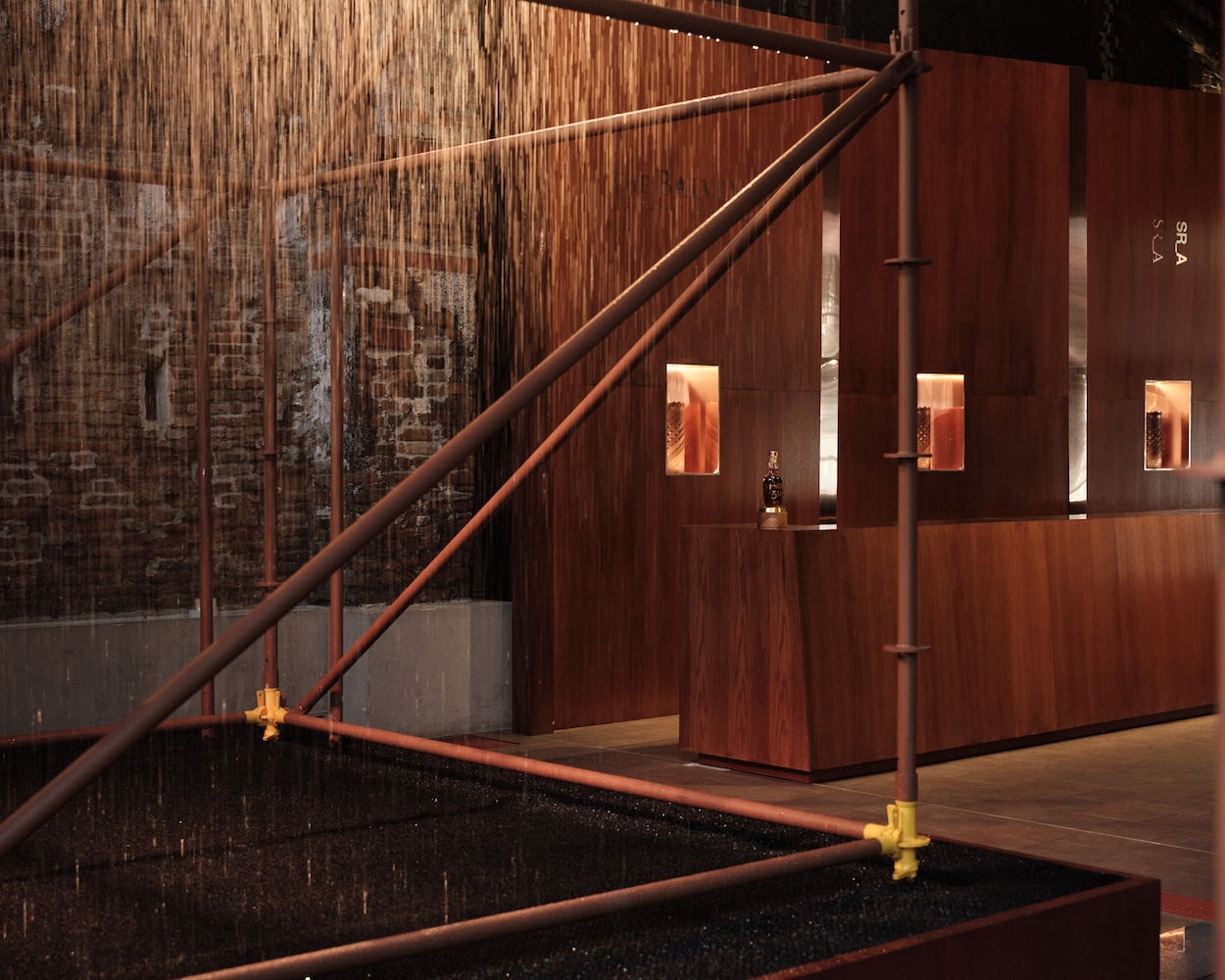
“I have no qualms against any institutions or structures, but my career is an act in itself of resilience and optimism,” he adds. “My first love is always public discourse, whether that’s through garments or art. I’ve been able to find this interesting proxy of furniture and sculpture to drive intent and purpose to get my works installed.” He believes the super-power of a designer is to find a question and then propose an answer. He’s done that for The Balvenie with Transposition, tapping into the alchemy behind single malt scotch whisky production.
